Text
What is a Utility Mapping Survey?
Utility mapping by the use of modern technologies is the need of the day. There are utility pipes like water, gas, power, telephone cable, sewers that one may encounter below the surface during construction. If you lead a construction service, utility service, etc., you will know the importance of having accurate data of underground utility lines.

Utility mapping surveys can minimise disruption to the public. If a builder were to burst a water pipe or an essential electrical cable, this could cause severe problems for the entire community and cost the economy thousands of pounds. Expert utility surveyors can carry out a detailed, extensive survey, helping to keep your project on time and budget.
When conducting a utility mapping survey, specialist surveyor companies can provide a permanent record of all the utility mapping carried out. Top quality, colour-coded survey drawings outline the detected utilities and critical topographic features.
You can select either a national or local surveyor to conduct a utility mapping survey. However, it's essential to ensure you choose a well-established business that provides high-quality drawings. This will help site workers find their way around the area with ease.
Any utility marked on the ground surface should be accurately recorded using a range of Total Station surveying techniques. Depending on your needs and requirements and the nature of your project, the drawing can include additional details. Many clients often require fixed surface utility features, including inspection chambers, valve boxes and telegraph poles. Some people also find essential topographic features such as fence lines, street furniture, and curb lines useful, along with geographical information, including house names and numbers, street and building names.
The utility mapping knowledge can be added to outlines and plans. It spares a lot of migraines. Else, you will be subject for harmed utility lines, unfortunate deferrals and avoidable costs. It enables organisations to conform to refreshed directions concerning well-being and security methods. A decent comprehension of shut topographical destinations is likewise helpful.
Once the appropriate information has been collated, the data is then referenced to a discretionary framework and level datum. Whenever asked for, illustrations can be provided to a particular matrix and level datum and overlaid on a current topographic study.
Utility mapping has progressed significantly. Although it is obligatory to contact Utility mapping Service suppliers before penetrating or burrowing, the Underground Utility Mapping can give you better authority over your development strategy. It is wise to look for a reliable company to offer you utility mapping services before you begin any construction job.
0 notes
Text
The History of Survey Engineering

Survey work is often traditionally termed as the art and science of determining the relative positions of specific points on, above, or beneath the earth’s surface or the actual establishment of such arbitrary points. Surveying is an old profession, which can be traced back to the oldest civilisations among the Egyptians, Greeks, Chaldeans, and Babylonians, who fast used old survey methods to divide and allocate land for use.
An engineering surveyor is a professional who specialises in a specific area of survey that relates to the survey of land with a specific focus on the establishment of designs for the construction of infrastructure, and structural and environmental civil engineering schemes. The engineering surveyor evolved from the traditional land surveyor whose work was to divide and apportion land for mapping or utility purposes. This profession was the forerunner of the civil engineers as well as the founders of the American Society of Civil Engineers. It is a profession that largely covers survey skills, but also includes a significant understanding of structural engineering knowledge.
The engineering surveyor role developed once engineers establishing infrastructure such as roads and rail networks as well as other engineering structures found that they needed the services of a surveyor. But such a surveyor also needed to have some basic engineering skills, and thus developed the engineering surveyor who specialises in developing engineering data for land development, building construction, and bridge, rail, and road constructions. Therefore, land surveying engineering is an essential element of the construction projects of any structures. Today, land surveying engineering plays a significant and important role in the developing world where it serves the purposes of surveying land specifically for the sake of facilitating the development of various structures by engineers such as the civil and structural engineers. In fact, no significant structures can be established without the presence and expertise of a survey engineer.
0 notes
Text
Important Factors to Consider when Choosing a Survey Engineer
The importance of a good survey engineer when developing land cannot be understated. The surveyor will help you avoid land disputes with your neighbours, identify geographical features that affect the property and identify the locations of any additions to the land. They will also conduct all the required measurements related to building. Many local authorities will require a proper survey to be conducted before commencing on development. Given that surveying is such an important part of land development, you must select a good survey engineer. These are the factors to look out for when choosing a survey engineer for your project.

Licensing
Licensure by a professional body denotes that the surveyor has the requisite education, skills and meets the minimum standards set by the body. It protects your project from being mishandled by inexperienced personnel. Therefore, make sure the surveyor is licensed by the specific state or territory that your project is in.
Experience
Surveying is a hands on task. An individual doing survey work gets better with time as with many hands-on- tasks. Therefore, a surveyor with experience is most likely going to do a good job. An experience of more than five years is generally good enough. Make sure you ask about their experience. You can also ask for testimonials from their previous clients before making that crucial decision.
Services offered
Survey functions are varied. They include defining boundaries, detailing encroachments, determining which land is public, identifying utilities and geographical features in the land. Often before embarking on a development, you will want all these functions to be carried out. You want a surveyor who can carry out all these functions adequately. Ensure that they are able to record the survey map at the land records office of that territory.
Adequate knowledge of the area
Historical knowledge of the area a surveyor is working on is sometimes as important as their surveying degree. Often utilities will not be documented on historical plan sets. They can easily get damaged during construction causing environmental damage, stalling of the project and conflicts with the local authority. The landowner could even be sued for damages. Assess the surveyor’s knowledge of the area. This could save you a lot of trouble.
A good survey engineer is one who is licensed, experience, offers various services and is knowledgeable about the area. Contact a reputable engineering survey company to get a get surveyor.
0 notes
Text
Using Drones for Accurate Volumetric Measurement

Drones are particularly effective at measuring volumes in real time with great accuracy. This method of volume analysis is not only cost-effective, but it also provides precise information to any connected device. Performed user tests have established that on average, drone volume measurements have an accuracy rate of 98% compared to traditional ground-based measurement methods. This is particularly useful when measuring stockpiles, which may otherwise require tedious, costly processes.
The use of drones for volumetric measurements has been incorporated in the stockpile assessment procedures of various industries, and is set to become a primary method of volume analysis in the next few years. As drones require little equipment and personnel, they are expected to revolutionise stockpile measurements. For this reason, it is imperative to ascertain how precise they are.
How Accurate is it?
Drones can be equipped with state-of-the-art cameras that safely capture and process stockpile images at an incredible speed. This process isn’t just much cheaper than traditional survey and measurement methods, it is also relatively accurate.
In a recent study by Geoconnexion International, an experiment was conducted to establish the accuracy rate of drone volume measurements. Stockpiles of several tons of gravel and sand were measured simultaneously both by drone capture and grounded LiDAR scanning methods. The drones had 16MP Canon cameras installed and captured 212 images of the stockpiles. The average standard deviation between the two methods of measurements was of 3cms. Not only was the inaccuracy minor when scaled to the size of the stockpiles, the margin of error could also be reduced by equipping the drones with cameras of greater quality.

Other LiDAR survey methods have, in the past, been proven to occasionally have lower accuracy rates than that of drones. When combined with the added benefits of drone volumetric measurement (increased safety, cost-efficiency, quick-processing, reduced labor), this method may arguably be the most desirable for industry professionals.
What You Must Note
The accuracy of the volumetric measurements of a drone will depend on the camera it is equipped with. Investing in a camera with a sharper, greater resolution will render results that may be virtually exact. High-resolution cameras have up to 50-megapixel image processors. The use of such cameras would guarantee the lowering of drones’ margin of error in volume analytics.
Drone photogrammetry is already accurate enough to effectively use in stockpile measurements. However, it is also set to grow increasingly precise with time and technological advances. In a near future, it can be expected that drones will be the most reliable method of conducting volumetric surveys.
0 notes
Text
What's The Difference Between A Volumetric and Topographical Survey?
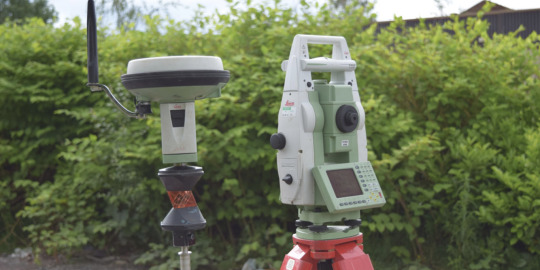
Surveying is one of the most fundamental activities when it comes to property development and land ownership. The growing property market around the world has made surveying a discipline in its right. In spite of this, surveying is still a very misunderstood profession. Many people are not aware of the job description of survey engineers and often wonder why they would need one in the first place. However, if you are thinking of building a property or buying a parcel of land, the law makes it mandatory that you enlist the services of a licensed survey engineer. So what exactly does a land surveyor do?
Generally, the work of survey engineers entails measuring properties to determine boundaries. This is highly important to property ownership because it prevents future property disputes between property owners. Additionally, it allows a property owner to obtain a permit for construction from the authorities. Nevertheless, land surveying is far from being a monolithic profession. There are two types of surveys which can be conducted on a property depending on the purpose of the land in question. These are: volumetric surveys and topographical surveys. Although many people conflate the two, they actually have very different methodologies and are used in different scenarios.
Volumetric surveys (also known as quantity surveys) are typically performed in order to calculate and establish stockpile volumes, excavated quantities and volumes of earthworks on a piece of land. This type of land survey is usually employed by property owners or developers who are looking to undertake large excavation projects like mining or construction of a dam. A volumetric survey engineer will measure the stockpiles on the property in question whether it is a quarry, mine, lake or dam and offer sound advice on how much material can be excavated. It is important to note that volumetric surveys are really complex to perform and often require the aid of state of the art technologies like GPS positioning, aerial mapping drones, and modelling software.

Topographical surveys are typically what most people associate with surveying because they are far too common. These types of surveys are conducted in order to identify and map out both natural and man-made features within a property as well as the elevation of the property. Before you can embark on any construction projects on your property, the authorities will require a topographical survey to be conducted on the land. This is crucial to ensuring that the construction project is operated safely and does not endanger the lives of people. Moreover, mapping out the features of a property ensures that whatever development projects are undertaken do not interfere with or disrupt important public utility lines like telephone, electricity, and drainage.
If you are a property owner or are thinking of acquiring one, you will undoubtedly need the services of a survey engineer at some point. Having the right information on the different types of surveys will allow you to make an informed choice when it comes to finding the best survey engineer.
#topographical land surveyors#land surveyor#volumetric survey#survey engineering#survey engineers#land survey engineering#survey engineer
0 notes
Text
When Would I Need a Land Surveyor?
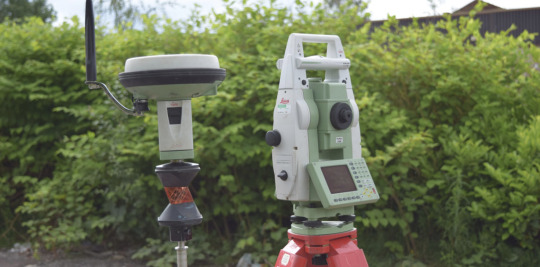
Land surveying is a very important practice in urban planning. It guides administrative authorities like city councils on how to apportion land for different development activities like building roads, excavating mines and even designating residential areas. If you already own a piece of land, however, you may wonder why a land survey is necessary for the parcel of land you own, or are thinking to purchase. As a matter of fact, you will likely need a land survey for several reasons.
Some of the reasons why you may need a land survey to be conducted on your property include:
i) Solving Boundary Disputes
Boundary disputes often arise when two property owners have their properties in close proximity. For example, one property owner may feel that their neighbour is encroaching on their property by building a fence on their land. To settle these kinds of disputes, the law requires that a land survey is conducted on the property so that the boundaries of each party's property can be clearly determined. If you are considering purchasing a property, you will also need a land surveyor to conduct a boundary survey on the land to determine its boundaries so as to avoid future boundary disputes with your neighbours.
ii) Obtaining Building Permits
Local and state authorities require that a property owner conduct a survey on their property before they can be granted a permit to conduct any development activities on the property. If you are considering constructing a structure on your property such as a balcony or erecting a fence, you will need a land surveyor to conduct a survey on your property before you can obtain a building permit from the relevant authorities.
iii) Utility Mapping Surveys
A special kind of land survey is also necessary to map the positions of public utility lines like sewer pipes and electricity lines that cross your property. This kind of survey is called a utility mapping survey. Conducting a utility mapping survey on your property ensures that whatever construction project you undertake on your property does not interfere with public utility.
Fortunately, land surveying is a recognised career and there are many professionals working as land surveyors. If you require the services of a land surveyor, you can find many chartered surveyors in Land Survey agencies as well as government ministries which deal with urban planning. They should be able to allay all your worries about your property.
For more information about land surveys, visit http://surveyeng.co.uk/.
#land surveying#Land Surveyor#land survey#survey engineers#land survey engineering#what is survey engineering#topographical land surveys#land surveys#land surveyor engineer
0 notes
Text
A Day in the Life of a Survey Engineer
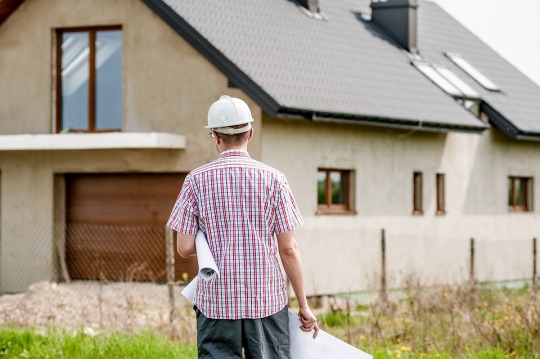
If you have been wondering what exactly a survey engineer does and what the typical ‘day in the office’ looks like for a person in this career, you have come to the right place. This article will walk you through what to expect on an average day in this profession. But first of all, let’s define what exactly the job description of a survey engineer entails.
At the most basic level, survey engineers perform measurements to determine the boundaries of properties, land to be exact. Landowners are required by law to be in possession of certain legal documents when deciding to change their property. They seek the services of surveyors to procure those documents. Practicing survey engineers are required to hold a bachelor’s degree in surveying or a relevant field and a state license.
If you’re contemplating a future career as a survey engineer, there are several tasks you expect to be performing on a day to day basis. First of all, you will likely spend much of your day at the office preparing sketches of property and maps, compiling reports on different properties and property holders and writing legal descriptions of surveys. You will be tasked to verify the accuracy of all kinds of survey data and write reports on the findings of survey studies conducted at sites. If you work as a mining survey engineer, you can expect to conduct volumetric surveys on the land in question. A volumetric survey is conducted to measure the volume of a stockpile or other earthworks. Volumetric surveys enable quarry operators and contractors to decide how much earth should be extracted from the ground in preparation for and during mine operations.
Another task you’ll perform in this career is to direct surveys to establish the boundaries of properties as envisioned by the law. As a surveyor, you carefully analyze and scrutinize legal documents pertaining to property, title deeds and lease titles to ascertain the ownership of property. You may also need to record the physical topography and other features of the properties in question.
In addition to that, your day to day operations may include the use of geodetic and engineering instruments to establish fixed points when sketching maps of property. You can also expect to prepare proposals and compute data pertaining to the land under survey and interpret data to determine the characteristics of the property.
If you are particularly excellent in mathematics, can calculate complex computations, possess decent writing skills and confidence, this career may just be perfect for you.
For more information about survey engineering, visit http://surveyeng.co.uk/.
#survey in engineering#surveying engineers#survey engineers#land surveying engineers#volumetric survey#land surveying
0 notes
Text
Guide to Survey Engineering

The concept of survey engineering has been around since ancient times. It is an important factor in the construction and safety of all the buildings we use, any technology we have and even the food we eat. Technology has seen both of these vital principles in our modern world evolve greatly over many years.
Survey engineering is hugely important to our modern society, and while its basic principles has not changed since it began many years ago, the tools and the technology has taken it forward immensely. More accurate measurements and calculations are now possible due to new computerised equipment, and the training is a lot more detailed than ever.
A survey engineer determines accurate three-dimensional points usually on the earth's surface which is beneficial when deciding to construct a building from scratch and for developing maps. Qualifying to be a survey engineer takes time, dedication and a good mathematical brain. A surveyor engineer is needed for any new construction project and is involved in many aspects of renovations and residential purchases.
Once the initial qualification is gained, which requires a degree, the surveyor engineer will be able to specialise in different areas of work that is available such as, land, quantity and building surveying. There is a constant demand for good quality surveyors all over the world as new buildings and land are always being developed.
The concept of engineering in surveying covers a range of things such as buildings, systems, technology and machines. The job of a survey engineer is wide and varied and once qualification is gained, a person could get specialised in any number of fields, from building construction to food production. They are involved in aspects of almost everything we see and use in our daily lives.
A good mathematical and scientifically tuned brain is needed for a job as a survey engineer and the individual will also need to an extremely good problem solver. This type of career is very wide ranging and rewarding. You could find yourself working in an office or in a factory, working on the design of complex machines or food packaging.
Survey engineering is highly complex role that play great significance in shaping the world we live in. Newly qualified individuals are always in demand and these are careers that are not likely to face any difficulties as the world will always need new buildings and technology will always be advancing.
#survey engineers#surveying engineers#survey engineering#survey in engineering#what is survey engineering
0 notes
Text
Things to consider when choosing a Land Surveyor Engineer
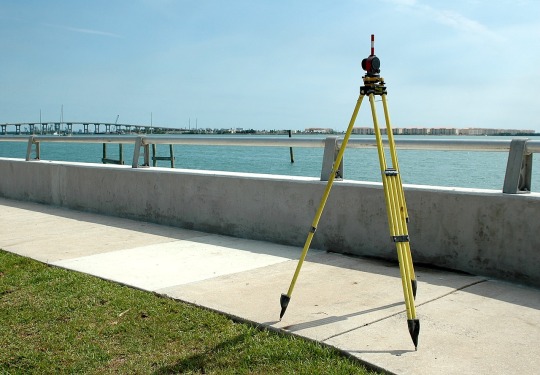
Developing a property involves tasks that are sometimes engaging. There are several aspects that should be known especially for a first-timer. Professionals such as a Land Surveyor Engineer will be needed to ensure effective topographic survey of the land. A topographic land survey will guarantee accurate mapping of ground contour and the existing features on the earth's surface. The topographic land survey is also essential in identifying diverse features slightly above or below the surface of the earth. It is therefore important to learn how to choose a competent surveyor. Below are some hints that might be of assistance when choosing the land surveyor:
Assess the credentials
It is vital to choose a licensed surveyor. All the basic information in relation to the potential surveyor should be examined. Factors such as the seminar attended will aid in determining the skill of the prospective surveyor.
Importance of work ethics
Knowing the principles of the surveyor when on duty is critical. It will be ideal if principles and that of the client align. Ethics play a significant part in the working correlations.
Enquire about accessibility
Communications should be constant since something to discuss concerning the project might be needed. It is much easier to work with a surveyor that is always available for discussions. Communication is a vital facet of every relationship whether professional or personal.
Being aware of the reputation of the surveyor
This includes numerous factors, from the professional relationship with the customers to the work quality. Knowledge and expertise are crucial, generally, however, a surveyor's reputation is of equal value.
Cost of service determination
Cost is undoubtedly an important factor. There are elements that can or cannot be afforded. Finances should be assessed and then compared to the asking price of the diverse surveyors. The cost is usually dependent on the size and other conditions. It is important to be aware of the diverse concerns that may impact on the budget.
As seen, there are diverse important deliberations when choosing a land surveyor engineer. While some are established, some surveyors rely on the preferences and requirements of the client. It is, therefore, significant to be cautious and be sure about the concerns prior to hiring the land surveyor. The property will depend on the client, so it is better to take ample time to decide. More requirements aligned to the specific concerns may be added. Therefore, customers should be cautious and wise in every movie made.
For more information about land surveying, visit http://surveyeng.co.uk/.
#land survey engineering#topographic land surveys#survey engineering#Land Surveyor#land surveyor engineer#engineering surveying services
0 notes
Text
How To Achieve The Best Results With Volumetric Surveys

Whilst doing volumetric surveys the accuracy matters a lot regardless of the method being used. This is mainly because the accuracy is the one that will give true results which will be helpful. Below are various ways and tips of obtaining the best results while doing these surveys.
Doing these surveys on smooth surfaces is much easier and allows the results to be more accurate. This is because whilst doing the survey on a flat surface is able to prepare a 3D model in a more effective manner. Furthermore, in a smooth surface fewer places will require to be measured. This can be more helpful if even the stockpile is smooth with defined edges. With smoothness the survey will be easier to do regardless of whether it is ground or aerial surveying. If the ground or stockpile is not smooth it will be not easy to know what is beneath the stockpile and therefore the results will not be totally accurate. This will also require more points to be surveyed so that the total results can be compiled to come up with the final results. Therefore, if the surface and stockpile are smooth the results will be more accurate.
Using the right photogrammetric software can also help a lot in producing better results while doing volumetric surveys. This is because the software will be able to produce the right 3D model especially while doing aerial surveying. There are different programs that are used to produce the 3D model and some of the programs are better than others. This makes it paramount to carefully compare the programs so as to identify the most suitable one. The comparison can be done easily through going through the descriptions of the programs. This comparison will take into account all the elements that will be required to produce the best 3D models. Doing the comparison will ensure that one will get the right software and as a result it will be easier to get better results.
Whilst doing ground surveying it is also important to use GPS receivers that are effective. This is because these receivers will be the ones that will measure the locations and levels of stockpiles. The importance of this is that it is not easy to know exactly what is happening below the stockpiles but with effective GPS receivers it will relatively easy for the receivers will know all about the stockpile. One can compare different receivers so as to know the ones that have the right qualities. One can also consult the experts who know the most effective receivers. Therefore, through following the outlined guidelines it can be possible to achieve the best results whilst carrying out volumetric surveys.
For more information about volumetric surveys, visit http://surveyeng.co.uk/.
0 notes
Text
Land Surveying Techniques in 2017
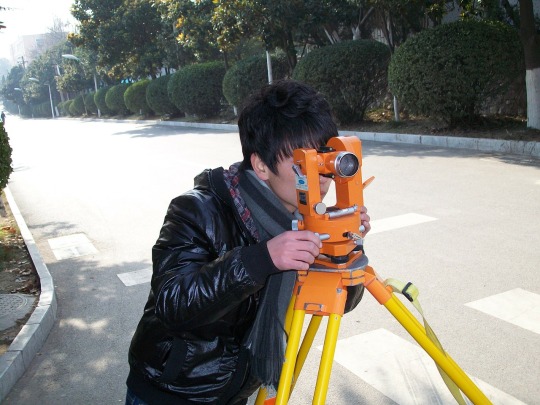
Earth-to-earth, dust-to-dust might be the reality of life but each one of us would love to own land for ourselves. We would like to build our dream house there and raise families and live there. Many of us prefer living in the homes alone. However, there are quite a few things which must be done before buying that dream land of yours. We must understand the basics about land surveying. Put in plain and simple words, when we talk about surveying of land, we are referring to a procedure by which we know what exactly finding out the three dimensional space as far as location of points are concerned. It also is about exactly measuring the distances and slants between them.
Land Surveying History
Surveying of land has not come about overnight. In fact the first land surveying might have taken place in Egypt during the Roman Empire, sometime during 2700 BC. The Great Pyramids could have been the result of such surveying and there are evidences to suggest that the builders of these wonderful structures used surveying techniques to come out with the masterpieces. It was also used during the Roman Empire and they used the term Agrimensores to name surveying of land. This could have been done in the first century AD. Since then it has surveying of land has evolved and grown to become what it is today.
Techniques Of Land Surveying
Land surveys are generally classified into three segments, standard land surveys, engineering surveys, and informational surveys. Standard land surveys are about fix boundaries of properties and also calculate land areas. Engineering surveys are done to ensure that the land is built in the correct place. Lastly, informational surveys are used for the purpose of producing charts and maps.
There is also something known as geodetic surveys. Also referred to as plane surveys these are considered to be extremely accurate and they are done when there is a need to survey large areas. It takes into account various factors including curvature of the earth and also uses a number of other surveying techniques and methods. Hence we should try and use the surveying methods and techniques depending on the final objective of the same. There are experts and professionally qualified surveyors who do the job. You must get in touch with them for all such land surveying needs. These surveyors are government approved and hence the surveying figures and facts which they offer would be correct in the eyes of laws of the land at all points of time.
#Land Surveys#topographical land surveyors#land survey techniques#land surveying#land surveyors bolton
0 notes
Text
Using Ground Penetrating Radar for Locating Utilities
Utility detection is a very vital phase of project planning since it helps identify the type and location of utilities underground so as to prevent damaging them and also posing danger to the workers on site. This is a step that every engineer, contractor and construction stakeholder needs to do carefully and meticulously. Thanks to technological advancement, Utility detection is now possible in a two-step process by use of radio detection and Ground Penetrating Radar (GPR).
Ground penetrating radar uses radio waves to effectively and non-destructively locate subsurface structures and objects. SurveyEng Ltd is a reputable company with services majorly applied in the area of geological surveys using GPR for detection and mapping.
Why use GPR for locating utilities?
There are various and diverse methods of locating buried utilities. One of the most common approaches is the energising of metal pipes and cables using electrical currents and then employing magnetic-field sensors to detect the flow of the current. But this is only efficient and applicable where the utility is metallic. In the event there is a break in the flow of current, or there is interference of any kind from external factors, then the method is rendered inefficient. GPR provides better alternative since the GPR systems generates its own energy and detects both metallic and non-metallic objects. GPR offers an effective and cost-friendly solution to the problem of utility location.
Methodology
GPR is usually deployed in two major ways. Commonly, the “locate and mark” is used where the utility is located and the spot is marked. The second and more effective way is to map the entire area in a way that will create subsurface images. The latter is applicable even in complex situations.
Instrumentation
Most GPR systems operate within the 100 to 500 M H z. Such systems are able to offer the best compromise between spatial resolution and depth of exploration. It is these frequencies that also dictate the size of the sensor that is best deployed on a cart. For precision and sensitivity, it is usually recommended that carts are made of non-metallic materials. There is usually an integrated display unit to give feedback from the detection process and guide the surveyors.
GPR significantly enhances the understanding of subsurface targets and obstacles without having to dig. This is a more efficient and time-saving methodology than traditional methods of geological survey.
#GPR#gpr systems#ground penetrating radar#radio detection#utility detection#geological surveys#utility mapping
0 notes
Text
Land Surveyor Services in Bolton, Lancashire
Having a land surveyor services could save you a lot of trouble in form of costs and hassles in the future. To holistically benefit from the services offered by a Land Surveyor in Bolton, Lancashire, there are some things you need to know. These include;
Who is a Land Surveyor?
Basically, a Land surveyor is someone that deals with the definition of land boundaries. Whenever there are custom home builds or home renovations, there is need to have land surveyors identify lines on the ground and determine the feasibility of the project to be undertaken. A land surveyor helps to identify the land boundaries on legal documents in its actual physical location.
What is the importance of a land survey?
If you are a homeowner looking to do some building of a fence, garage, pool or patio, without doing a land survey you might not have recourse. This means that in the event that your buildings are found to be intrusive to a space that is not your own, you may be required to demolish them in the interest of the person whose space you have intruded. A land survey is important to ensure that you have the boundaries defined so that you don’t exceed the limits of your own.
If you are looking to buy a property in the form of land, land surveyor services are quite important to ensure that you get legitimate land as defined in official maps and legal documents.
If you are looking to buy a property in the form of land, land surveyor services are quite important to ensure that you get legitimate land as defined in official maps and legal documents.
When should you do a survey?
A boundary survey is not always necessary but as a buyer, it is to your benefit that you enlist the services of a Land Surveyor to know exactly how much land you are paying for. Land surveyors also find defects on the property that can be your card in re-negotiating the price of the land.
Whenever you are about to make some improvements that will have implications on the outdoor orientation of your property, it is important to ensure that you engage a land surveyor to ensure that your bases are covered. You need to make sure that there are no easement rights by service provision companies like gas, water or Sewerage Company that can get rights to remove your garage to carry out their maintenance procedures.
If you are a property owner, buyer or developer you cannot overlook the importance of Land Surveying services. You need to find a proficient one to help you before you can sell, buy or make alterations to your property.
For more information about land surveying services, visit http://surveyeng.co.uk/.
#land surveying#Land Surveys#land surveyors bolton#land surveyors lancashire#topographical land surveyors#topographicalsurveys
0 notes
Text
BENEFITS OF UTILITY SURVEYS
There are numerous benefits of undertaking a Utility Survey before starting any development project. It ensures that there is minimal loss to underlying infrastructure like pipelines and cables while ensuring there is no danger posed to those working on site.
A Utility Survey is basically cautionary monitoring of public utilities put in place to facilitate movement of resources within an area. These include internet, electricity and phone cables, gas, sewage and water pipes. These are usually intentionally designed and installed to be located from above the ground through utility survey methods.
A utility Survey provides important services to both developers and the common person. Existing utilities need to be located and evacuated before development can begin. When these systems are down, they need to be expertly located for repairs and replacements.
So what are the Benefits of Utility Surveys?
1. Ensures public health and safety.
Projects that require mining, piling or deep foundations require penetration below levels where pipes and cables are set. Locating their existence and position minimizes risks and hazards to the general public
2. Provision of thorough detection.
Factors like the topography of the land, the land condition, soil conditions and depth of the utilities may make it a challenge to locate utility systems underground. Utility Surveys offer the technology necessary to do thorough surveys and detections.
3. Non-invasive surveying using special equipment allows surveyors to detect what is beneath the surface without having to break the land. This saves time and money while achieving the desired results safely and effectively.
4. Reduces project delays.
Many times projects run into delays because they did not consider comprehensive utility surveys. These delays come about when the excavation for foundation or site preparation is stalled because there are utilities on the way. Advanced utility surveys help to do the surveys in the shortest time possible. This includes methods that employ Ground Penetrating Radar which enables surveyors to know what is underground without having to dig through.
5. Utility surveys also includes detailed risk assessment and utility plan which is presented to clients. This further enhances the ability to plan a project more safely.
To fully enjoy the benefits that come with professional Utility survey services, take your time to seek out the best utility surveyors. It is clear that not all surveyors are created equal and you need to work with someone who knows exactly how to go about the whole process.
For more information about utility surveys, visit http://surveyeng.co.uk/.
0 notes
Text
Why Volumetric Surveys are Useful
The process of a land survey begins with a topographical survey. A topographical survey is the study of a land terrain, focusing on all its features including natural and unnatural objects. The survey gives precise details including measurements and land capacity, in digital format or paper format. For a land survey to be successful, two or more topographical surveys have to take place, on the particular piece of land. A volumetric survey on the other hand is an assessment of these two or more topographical surveys that often take place separately, during the entire land survey process. It entails calculating the volume of quantifiable land mass.
There are two types of volumetric surveys; ground surveys and aerial surveys. As its name implies, ground surveys involve gathering and quantifying volume data while physically on the ground. On the other hand, aerial surveys require the use of aeroplanes, to carry out volumetric surveys. Whether it is a ground survey or an aerial survey, both seek to give accurate results.
Volumetric surveys are useful in establishing information relating to;
Management of stockpiles awaiting processing
By using volumetric surveys, a surveyor is able to calculate the mass of stash pending processing and obtain its overall value. From this information, the surveyor is able to sort different stockpiles and determine their respective destinations.
Monitoring the removal of stockpiles
A land project often involves the removal of waste materials or stockpiles from the excavation site to a landfill site. Volumetric surveys assist surveyors to gather vital data that will further help in monitoring and documenting the removal of these stockpiles.
Acquiring quantitative data of open volume areas
When surveying open volume areas, surveyors use the data obtained to determine if the excavation site satisfies local authority requirements, as well as environmental & safety regulations
The Benefits of Volumetric Surveys;
Accuracy – Volumetric surveys provide accurate results, thus eliminating the waste of raw materials. This is particularly important in the civil engineering and construction sectors, as contractors are able to establish accurate quantities for tendering, as well as acquire relevant quantitative data.
Saves Time & Money – Modern volumetric surveys use highly advanced techniques including GPS positioning, and 3D modelling to obtain precise volume measurements, of quantifiable data. This eliminates the need for manual calculations, thus saving on time and money.
In conclusion, volumetric surveys are useful for the success of any land project. For a survey to be successful, it requires the input of professional surveyors, who have vast experience in this field.
For more information check out SurveyEng’s website at http://surveyeng.co.uk/.
0 notes
Text
VOLUMETRIC SURVEYS; WHAT YOU SHOULD KNOW
A volumetric survey is aimed at calculatedly quantifying the amount of material that is required to be removed from a mining or construction sit and also the amount of material that will be imported as may be in the case of a landfill. It also goes ahead to compare the actual amount of material removed to the speculated volumes.
The volumetric survey process may be quite complex or pretty simple depending who you ask. With the uses of latest technology like computer generated three-dimensional modelling, GPS positioning, unmanned aerial vehicles, laser imaging and so forth, the process will not only be easy and fast but also with a high level of accuracy.
Types of volumetric surveys for a landfill.
There are two methods of going about volumetric surveys. These are;
1. Aerial surveys
Aerial surveys require the use of aircraft, whether manned or unmanned to get stereo imaged of the site. The images are then run through photogrammetric software that then produces a 3D model of the site in question. It is then possible, from this information to calculate volumes for stockpile and landfill capacity.
The beauty of using aerial survey is that it is an efficient method especially when the subject site is large or there is more than one stockpile.
2. Ground surveys
Ground surveys employ the use of GPS receivers to electronically measure sites and record the data which is then loaded to software that will help determine the volumes and develop 3D models.
Ground surveys are much faster and can be undertaken in any weather on short notice. It is however time consuming if the area to be measured is very large.
Are surveys important?
Volumetric surveys are very useful not only in a qualitative form but also quantitatively. Volumetric surveys help in;
• Management of stockpiles in a landfill waiting processing or recycling.
• Monitoring the rate at which the landfill space is being taken up.
• Projecting on just how much more the landfill can take. This is important to ensure preparedness and proper use of the available space.
• The data can be used in decision making during tendering of landfill spaces and other logistical purposes.
Other than that, volumetric surveys are a necessity. Landfill owners are required to have their sites surveyed twice every year. This usually happens in June and December, which is the survey period.
When to undertake a survey
There are two main periods when a volumetric survey is required. These are;
Initial baseline survey.
This is a survey directed by EPA for newly scheduled landfills. The initial baseline survey is done to establish the total capacity and sets the pedestal upon which all other surveys will be carried.
Routine surveys
This is done during the survey period (June and December); unless otherwise directed by the EPA. An occupier or a landfill owner may be directed by notice in writing to carry out a volumetric survey for a given reason for instance before placing waste in a newly constructed cell.
It is important to remember that all surveys must be undertaken by qualified survey engineers.
0 notes
Text
UTILITY MAPPING SURVEYS
In any construction work, it is useful for construction technicians, engineers, and property owners to clearly understand what lies beneath their site. Before excavating to build or install utility lines such as gas, water, power, sewerage, telecoms, and fibre-optics among others, it is essential to know where other pre-existent utility lines lie. In the context of an actual construction project, outdated, inaccurate, or lacking utility information may lead to pre-existent utility line damages, service interruptions, and conflicts. Also, lack of adequate information may lead to serious property damage, death or injuries, and legal suits. Utility mapping surveys are meant to alleviate such problems by providing accurate and up-to-date information on utility line locations.
What is a Utility Mapping Survey?
Utility mapping survey is the process of locating subsurface utilities and mapping them using land surveying and geophysical techniques. The mapping process provides valuable information on below ground utilities and conditions, and it also shows all types of obstacles such as foundations and voids as well as their type, position, and depth. Utility surveyors use ground penetrating radar and other forms of state-of-the-art equipment to map these utilities without disrupting site workers, the public, and the ground. The surveyors work according to the BSI PAS 128 British Standard, which is the latest utility mapping standard in Britain. The process of survey and mapping starts with a desktop study, reconnaissance of the site, detection, and verification of utility presence. The process ends by mapping of the utilities in 3D or 2D digital or hard copy maps as well as site markup where necessary. Markup services on the site’s ground also allow the identification of utility fixtures such as inspection chambers and valve boxes. Building and street names can also be incorporated in the markups.
When Are Utility Surveys Required?
Utility survey services are ideal for professionals or property owners that want to do excavation work. The services are essential where records are needed as a prerequisite for construction design works, feasibility studies, and future reference. Property buyers seeking to buy property may also need such services to prove that the utilities declared are actually present. The maps from such surveys are also important for planners and designers of construction works because they can be used to improve safety and save money and time while avoiding legal suits resulting from utility line damages or injuries. The utility mapping survey services are essential for entities engaged in construction and installation of utilities, telecoms, rail, and highways among others.
What Are the Benefits of Utility Mapping Surveys?
o Updated records, which inform future designing, planning, and construction works
o Reduced disruption to users of roads, utility lines, and the actual sites
o Avoidance of unnecessary excavation and destruction of preexistent utility lines
o Enhanced safety during excavation and construction
o Avoidance of delays, risks of legal suits, and costs of repairing damaged utility lines
What Are the Equipment Used in Utility Mapping Surveys?
Utility mapping is initially done using electromagnetic instruments that detect elements fed into the utility lines such as pipes. The fed material is detected using these instruments, and it in turn shows the utility lines’ location.
State-of-the-art ground penetrating radar can also be used to scan the depths of the ground and detect utility lines, and this can be further followed by vacuum excavation, which is used to physically and accurately locate and verify the presence of utility lines.
The location of utility lines is plotted with the use of the latest GPS instruments and a total station, which allow surveyors to display their findings in an accurate manner on 3D or 2D digital BIM plans or CAD drawings.
0 notes